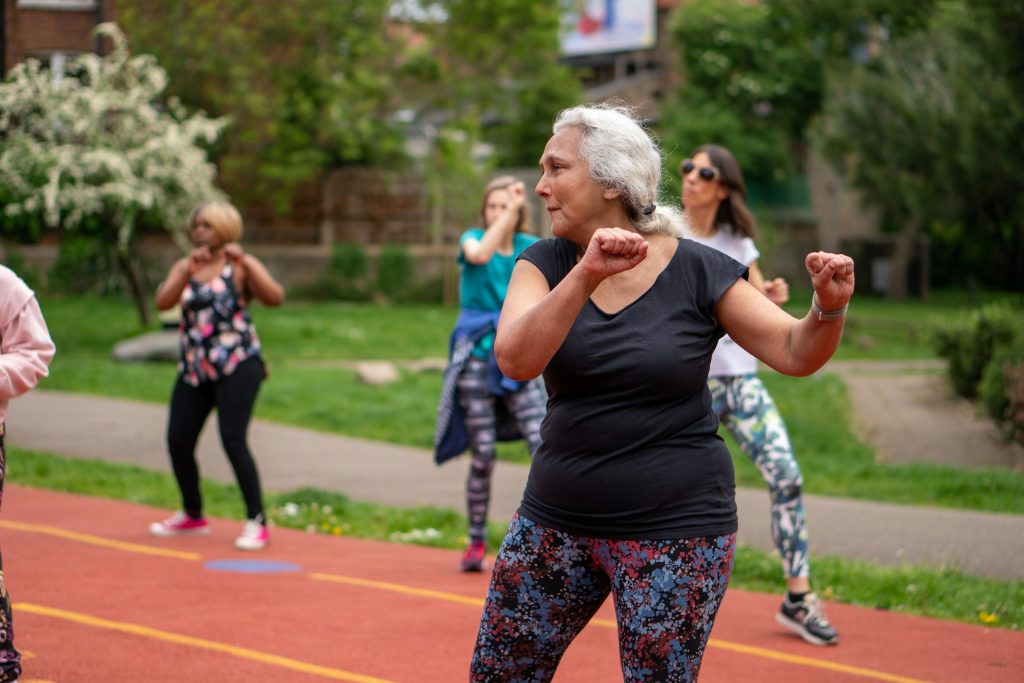Seniors often face challenges with mobility, but staying active is crucial for health and well-being. Limited mobility doesn’t mean giving up on exercise. It simply means finding the right workouts that cater to individual needs and abilities. By incorporating the right exercises, seniors can maintain strength, flexibility, and a positive outlook on life.
Engaging in exercise helps boost mood, increase energy levels, and improve overall health. For those with mobility limitations, it’s about adapting traditional workouts to fit personal capabilities. This approach ensures that everyone, regardless of their physical restrictions, can benefit from a regular exercise routine.
From seated exercises that enhance strength and flexibility to water-based activities offering low-impact workouts and calming practices like adaptive yoga and Tai Chi, there are numerous options. These tailored workouts not only support physical health but also enhance mental clarity and emotional well-being. With the right guidance and exercises, seniors can enjoy an active lifestyle and a fulfilling life.
Understanding Limited Mobility and Its Challenges
Limited mobility in seniors can result from various factors. Aging naturally leads to a decrease in muscle mass and joint flexibility, making movement more challenging. Health conditions like arthritis, osteoporosis, or past injuries can further restrict mobility. Chronic illnesses such as Parkinson’s disease or stroke may also affect physical capabilities.
Despite these challenges, staying active is crucial for seniors. Physical activity boosts cardiovascular health, enhances muscle strength, and improves balance. It can also elevate mood and promote better sleep. Being active helps seniors maintain independence by making daily tasks easier and reducing the risk of falls.
Activity doesn’t need to be strenuous to be beneficial. Even gentle exercises that accommodate physical limitations have significant positive effects. It’s about finding activities that are safe and enjoyable. These help seniors maintain physical health and offer mental stimulation, contributing to an overall better quality of life. Understanding the causes of limited mobility enables seniors and caregivers to choose appropriate exercises, ensuring physical activity remains a key part of their lifestyle.
Seated Exercises for Strength and Flexibility
For seniors with limited mobility, seated exercises provide a safe and effective way to build strength and enhance flexibility. These exercises focus on different muscle groups while reducing the risk of strain or injury. They are ideal for those who need a stable base during their workout.
Upper body workouts using resistance bands are particularly effective. Resistance bands are lightweight, affordable, and easy to use. They engage the muscles in the arms, shoulders, and back, improving strength and tone. Exercises like seated bicep curls, shoulder presses, and chest expansions with resistance bands help maintain upper body strength and mobility.
Stretching routines are crucial to improving flexibility and circulation. Simple seated stretches can target the legs, back, and arms, promoting better range of motion. Gentle neck rotations, ankle circles, and seated hamstring stretches encourage circulation and relieve tension.
Incorporating these exercises into a daily routine provides consistent benefits. Performing them regularly can lead to increased strength, better posture, and enhanced flexibility. This approach makes fitness accessible and allows seniors to stay active safely and comfortably within the confines of their abilities.
Water-Based Activities for Low-Impact Exercise
Engaging in water-based activities offers a fantastic way for seniors with limited mobility to stay active. The buoyancy of water supports the body, reducing strain on joints and muscles. This makes water exercises highly beneficial for seniors, providing a low-impact workout that encourages movement without added pressure or pain.
Aqua aerobics is a popular choice, allowing seniors to perform a range of exercises while enjoying the buoyancy and resistance water provides. These exercises can enhance cardiovascular health, improve strength, and boost flexibility. Participating in group classes can also foster social connections, adding a supportive and fun aspect to exercising.
Pool exercises like walking or light jogging in water can further increase endurance and balance. Being in the water eases joint discomfort and allows for greater freedom of movement. However, while performing any water exercises, safety is paramount. Ensuring the water temperature is comfortable and getting assistance when needed can help prevent accidents.
By incorporating water-based activities into their routine, seniors can experience the joy of exercise in a safe and welcoming environment. The water’s supportive nature helps build confidence, offering satisfaction and improved health outcomes.
Adaptive Yoga and Tai Chi for Balance and Calm
Yoga and Tai Chi provide calming and restorative exercise options for seniors facing mobility challenges. These low-impact activities improve balance, flexibility, and mental clarity, making them ideal for enhancing overall well-being.
Adaptive yoga tailors traditional yoga poses to accommodate different mobility levels. Using props like chairs or walls, seniors can safely engage in poses that stretch and strengthen the body. Breathing exercises included in yoga practice also help reduce stress and foster mental relaxation. By modifying yoga, participants can find poses that suit their abilities and offer tangible benefits.
Tai Chi focuses on slow, deliberate movements that enhance balance and coordination. Its flowing motion requires minimal physical strain, making it suitable for seniors with limited mobility. Practicing Tai Chi can improve posture, boost mental focus, and promote a sense of peace and relaxation.
Both yoga and Tai Chi integrate the mind and body, fostering relaxation through thoughtful movement and meditation. These activities encourage mindfulness and provide a sense of accomplishment and balance, contributing to a more fulfilling and serene lifestyle.
Conclusion
Tailored exercise routines are vital for seniors with limited mobility, promoting both physical health and emotional wellness. Combining seated exercises, water-based activities, yoga, and Tai Chi provides a balanced approach that addresses mobility challenges while ensuring physical and mental engagement.
These exercises offer the chance to stay active, build strength, and improve flexibility, enhancing daily living and independence. Seniors can overcome limitations by embracing these practices, enriching their quality of life with confidence and joy.
To truly benefit from a supportive and encouraging environment, consider joining Eightlimfit. Our tailored programs in Phoenix and Scottsdale offer a supportive community and expert guidance, helping you strengthen your body and soul. Explore how our comprehensive approach to senior health can help you embrace each day with vitality and peace. Contact our Scottsdale personal trainers today.

